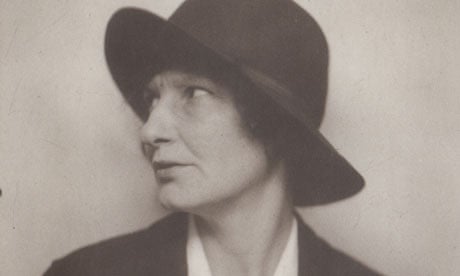WORDS BY JOJO TULLOH
Series
Dorothy Hartley
Vagabond Cooks
WORDS BY JOJO TULLOH
To be a vagabond is to have the urge to wander; to cook conjures a kitchen, a desire to stay in one place. These words do not sit comfortably together. The first speaks of the open road, an itinerant life filled with uncertainty, unfamiliar flavours, meals consumed quickly and often out of doors; the traveller takes what she can find. By contrast, the cook has time to plan and the means of gathering ingredients; her culinary paraphernalia – pots, pans, plates, glasses, knives and stove – are at hand. So what makes a vagabond cook?
For me the phrase describes a particular kind of food writer, one for whom food is a doorway to other cultures, times past and far off places. I think of these women (and somehow they are always women) as cooks whose kitchens have no walls, travellers for whom food was an essential part of the journeys they took. And for their readers, the recipes were a way of travelling without ever leaving home.
This short series began with Lesley Blanch and continues with Dorothy Hartley (1893-1985), an English social historian, traveller, writer and illustrator whose legacy is a unique record of English food and country living.
Consider this book as an old-fashioned kitchen, not impressive, but a warm friendly place, where one can come in any time and have a chat with the cook
Dorothy Hartley (1893-1985)
Dorothy Hartley’s masterwork is her encyclopaedic history of English folk cookery, Food in England. Its 676 pages are filled with practical advice and recipes on every aspect of English food through the ages, from brick ovens and cauldrons to seaweed to beer to salting meat and baking bread. Written with the authority of one who has tried everything in the book herself, she writes conversationally and with great charm: "Please consider this book as an old-fashioned kitchen," she says. "Not impressive, but a warm friendly place, where one can come in any time and have a chat with the cook."
I picked up the plain-looking, red clothbound book on a second-hand book stall without knowing anything about it. I realised instantly that it echoed my own love of cooking, with ingredients I had either grown myself or had bought direct from the maker. It is a book that considers not just the preparation of food, but the traditions, the tools and the people behind it.
Food in England is also a wonderfully informative and fabulously distracting read; as well as conveying practical information, Dorothy had a novelist’s ability to conjure up a place and an experience vividly in just a few lines. You can travel with her, taking bread and cheese out to a farm worker on a sunny spring day in 1935, or jog along in a pony and trap, a plaid blanket over her knee, as she visits a far-flung spot on the Western Isles. Her work is rich in detail and there is a vitality that makes her words read as new, even many decades after publication.
1. Food in England (MacDonald, 1954)
2. Life and Work of the Peoples of England (GP Putnam's Sons, 1926)
3. The Old Book: A Mediaeval Anthology (Knopf, 1930)
4. Mediaeval Costume and Life (Batsford, 1931)

Dorothy took the art of observation one step further than most food writers by illustrating her own work. Whether it is a trout wrapped in a leek, a "delicate way of cooking a small chop", the shapes of bread, or butter churns powered by dogs, nothing seems to escape her notice and there is something about the way she sees and describes that makes everything come alive. Take this recipe for mushroom sandwiches from Food in England:
Country people make delicious sandwiches of brown bread and butter and finely sliced up mushrooms (raw), the mushrooms being sprinkled with lemon juice.
This description works as a pared-down recipe, but then so much more: there is delight in the skill of others, instruction and also anticipation. More than anything, I really want to eat this sandwich. Elsewhere, with similarly mouth-watering effect, she delights in campfire cookery. This recipe for ‘Wild Omelets’ had me longing to be outdoors, cooking under a summer moon:
To travellers: the best omelets on earth are made over the white ash of the camp-fire. Brown the tops with a red-hot charcoal of timber, held almost two inches above the omelet’s surface as it rises in the pan.
Dorothy’s eye was trained on the essentials of life, specific to the place she was in. She left behind a record of the invisible everyday. How many other food writers describe not just the food but also the hearth it was cooked on, the different vessels suitable for each task and where the washing up was done? I think of Dorothy Hartley as an anthropologist in the kitchen, for while scholarly research underpinned her writing, she was also alive to the possibility of discovering knowledge from whomever she met.
Dorothy Hartley’s eye was trained on the essentials of life, specific to the place she was in. She left behind a record of the invisible everyday
To go back a little in time, Dorothy Rosaman Hartley was born on the 4th of October 1893 at the grammar school in Yorkshire where her father was headmaster. She attended Loughborough High School and afterwards Nottingham Art School. The First World War interrupted her studies (she went to work in a munitions factory and also on the canals) but she took them up again at the Regent Street Polytechnic in 1919 and returned to Nottingham as a teacher (1920-22). Her writing life began in 1925 when she collaborated on the six-volume Life and Work of the Peoples of England. At this time she also published The Old Book, her medieval compilation, and in 1931 she edited her great hero the 16th century poet and agriculturalist Thomas Tusser’s long poem of the farming year. She also published the book Mediaeval Costume and Life which saw her make and model the clothing of medieval peasants (with diagrams for everything from lepers’ huts to pilgrim’s hoods).
From 1932 to 1936, Dorothy travelled across the British Isles with camera, pen and pencil, commissioned by the Daily Sketch to write articles on country people and their trades. The pay was poor, only £8 a week, so she travelled by bike and sometimes her small car which she called Rabbit. She couldn’t be bothered with camping equipment and stoves, and often slept in the hedge and cooked on an open fire. She interviewed everyone she came across: shepherds, ditch diggers and eel catchers, tinkers, road menders, fishermen and peg makers. The articles have titles such as ‘The Perfect Winkle Eater’, ‘When the Cider Sings’, ‘Ever Tasted Laver?’ and ‘The Gentlemen Gipsy’. She seems to have been part vagabond herself, which must have drawn her closer to the people she interviewed. These travels provided material for several books, Here’s England (1934), The Countryman’s England (1935) and Made in England (1939). This first-hand knowledge gives her work a veracity few can match. Who better to draw such beautiful cross-sections of country hedges than the woman who often slept under one?
In 1933 Dorothy moved into a cottage at Froncysylltau and this estate (she also owned and let out six cottages) remained her base thereafter. The Second World War saw her write a paper for the United Nations and begin writing Food in England. Published in 1954 and in print ever since, this vast exploration of English food, folklore, work and life took her twenty years to write, and draws together material from all her previous works.



Food in England resists definition; it is outside genre. A mixture of historical, agricultural and botanical information, travelogue and memoir, her clear and engaging diagrammatic drawings offer a symbiotic enhancement of her prose. Throughout the book, joy is expressed in meeting with people who work with their hands, whether clog makers in the Midlands or the Welsh farmer’s wife churning butter on the hafod (hilltop farm). There is a respect for the old ways and an understanding that with every step forward there is a loss, a break in the passing of knowledge, that this book seeks to rectify. It’s hard not to feel a huge sense of loss when reading Dorothy Hartley’s descriptions, written in the early 1930s, of the bounty of locally made cheeses and cream in country markets, and the simple yet delicious menus of local food served up at inns on market days as ‘Market Ordinary’, described in her book Here’s England.
A ‘Market Ordinary’ is a large helping of the most popular produce bought at its seasonal prime in the local market; it is well and plainly cooked in the inn kitchen, and simply and most generously served on coarse white tablecloths on a long strong table, twelve til three pm. The platters may be thick, the knives and forks clumsy, but the food will be good. At an Oxfordshire ‘Ordinary’ I have had a saddle of mutton, red-currant or barberry jelly, spinach and potatoes, apple-pie and cream, a dish of cheese straws and cider. Near Nottingham for a ‘Market Ordinary’ I have had roast duck and peas, lemon pudding, cream cheese and biscuits (home made) and excellent Trent Valley ale. East towards Rutland, later in the year, I have eaten roast beef, horseradish, roast potatoes, cabbage, followed by damson tart and custard and Stilton cheese. On the West I have had salmon and Caerphilly.
Dorothy was an oral historian drawing out the stories of all kinds of land workers and using this knowledge to underpin her reading. Her wandering is a huge part of what makes her writing so original and absorbing. She wasn’t closed off from the world, stuck in her own kitchen; instead she journeyed far and wide to gain knowledge and inspiration. In later life she presented a series of lectures about food at Goldsmiths, appeared on television and advised on BBC Radio 4’s The Archers. She died at the age of 92 at Fron House, Froncysylltau, on 22nd October 1985.
Dorothy Hartley lived happily in the past but her books continue to illuminate its practical reality for the present. Her greatest book, Food in England, is a living link to the cooks, farmers and country life we have left behind, and an essential part of our national culinary heritage. For Dorothy, the important things spanned centuries, never changing. In this quote she is describing medieval man in the introduction to her book Land of England. It illuminates her deep love of the countryside and the physical pleasure she took from it.
The men in this book are still alive, and in essentials exactly like ourselves. As babies we cry for the moon, as Gods we reach it, but as men we still walk the earth from which we are made, and which has taught us all we know. We are the direct descendants of these men. Our bodily instincts are still earth-instructed, we react to the reek of peat, sense the blue of wood smoke, rejoice in clear running water.
For Dorothy the past was a place she could see, smell and taste, and the men and women that inhabited it were still very much alive to her; she communed with them as she investigated how they lived. She may have been a solitary woman but I have a feeling she was never really alone.
5. Here’s England (Rich and Cowan, 1934)
6. The Countryman’s England (Batsford, 1935)
7. Made in England (Methuen, 1939)





